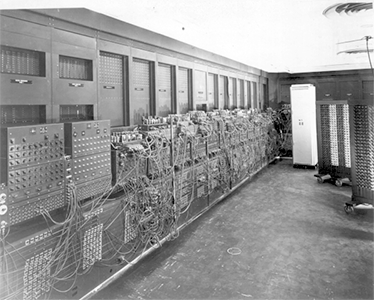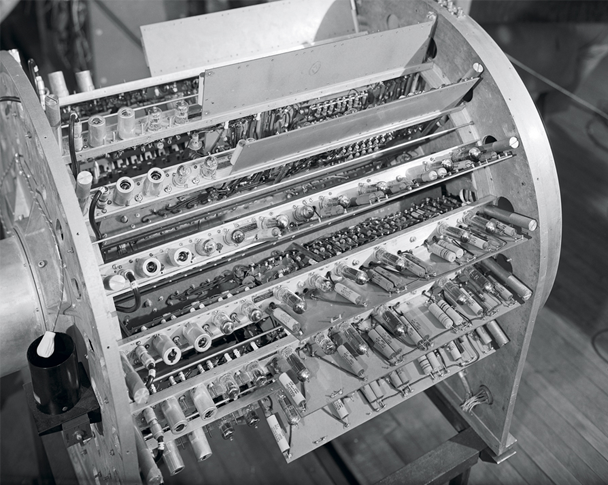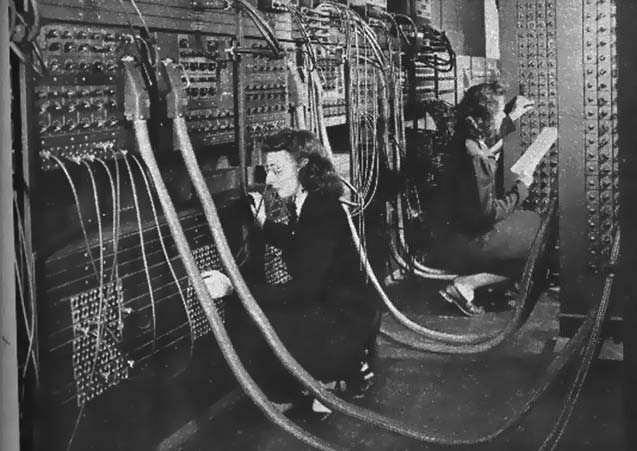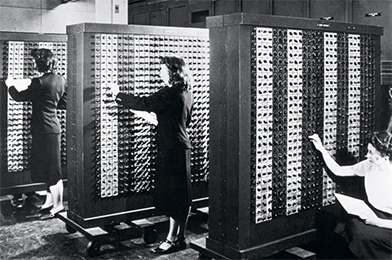Birth of the ENIAC
In 1943, the U.S. Army funded a team at the University of Pennsylvania in Philadelphia to build an electronic computer that could overcome existing technological barriers to perform firing table calculations needed during World War II. The computer was called the Electronic Numerical Integrator and Computer, or ENIAC for short.

Left side of the ENIAC, U.S. Army Research Laboratory.






